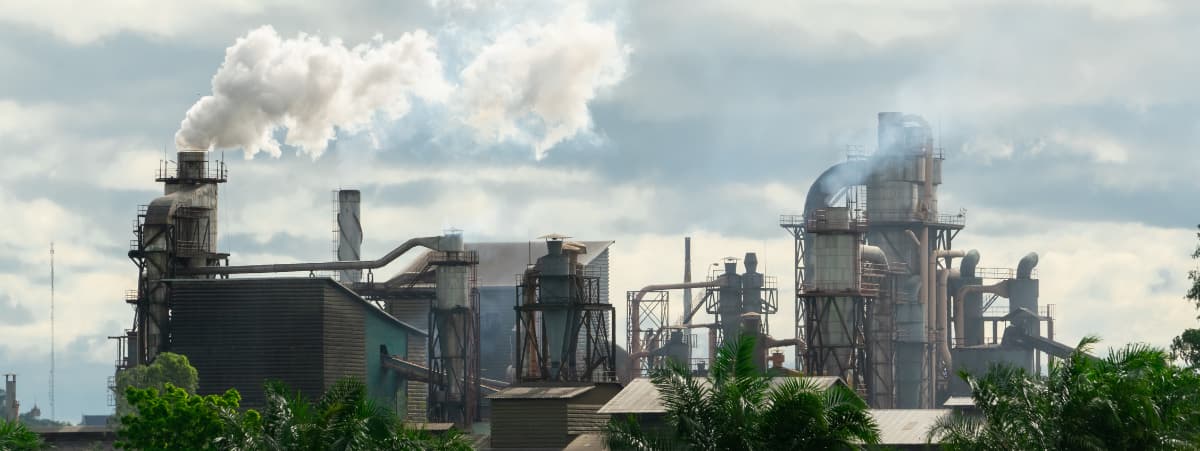The European Union enters the transitional phase of its comprehensive climate action strategy, as it faces pressure to tackle carbon-emitting industries.
With climate change posing a global threat, the EU must effectively address industries that contribute significantly to carbon emissions. They must put in place measures that ensure carbon-intensive sectors operate under a fair and equitable framework. However, while they are increasing their own efforts to combat climate change, there’s a concern about “carbon leakage” – when companies move their carbon-intensive production to countries with less strict climate policies, or when high-carbon imports replace EU products.
This involves not only internal efforts to transition industries toward cleaner practices but also creating incentives for non-EU countries to adopt similar climate-friendly approaches. Balancing economic growth with environmental responsibility requires the EU to lead by example, promoting innovation, sustainability, and global cooperation to ultimately mitigate the effects of carbon emissions on our planet.
What is CBAM?
To address this, the EU has introduced the Carbon Border Adjustment Mechanism (CBAM). This is a regulation aimed at placing a fair price on carbon emissions from the production of carbon-intensive goods entering the EU. It also encourages cleaner industrial practices in non-EU countries. This approach is aligned with phasing out the allocation of free emissions allowances under the EU Emissions Trading System (ETS), which supports making EU industries more sustainable.
The main goal of CBAM is to ensure that imports have paid a price for the carbon emissions produced during their manufacturing. This makes the carbon cost of imports comparable to domestic production, safeguarding the EU’s climate goals. Importantly, CBAM is designed to be in line with the rules set by the World Trade Organization (WTO).
When will CBAM regulations come into force?
The CBAM regulation became official when published in the EU’s Official Journal on May 16, 2023. It will start its transitional phase on October 1, 2023, with the first reporting period ending on January 31, 2024.
Initially, CBAM will apply to specific goods like cement, iron and steel, aluminum, fertilizers, electricity, and hydrogen – industries that have high carbon emissions and are at risk of carbon leakage. This scope will eventually cover more than half of emissions in sectors regulated by the ETS when fully implemented. The transitional phase starting in October 2023 serves as a learning period to gather information and refine methodologies in collaboration with importers, producers, and authorities.
During the transition, importers only need to report embedded greenhouse gas emissions without making financial payments. After this phase, indirect emissions will also be included for certain sectors like cement and fertilizers, based on defined methodologies. Flexibility is provided for reporting values during the first year, however, from January 1, 2025, only the EU method will be accepted.
What are the Implications for global businesses?
CBAM and changes to the EU ETS will impact businesses worldwide, influencing operations and strategic choices. These effects can be direct or indirect, calling for a comprehensive approach along the value and supply chains. Companies within the EU ETS scope need to anticipate higher carbon expenses if they continue using traditional fuels, potentially affecting their competitive standing in emission-heavy industries across the EU and global markets.
The introduction of the new EU ETS II will further raise conventional fuel costs, potentially accelerating the need for sector transformation. Importantly, the EU and its Member States offer diverse grant and incentive programs to support businesses in transitioning, while additional carbon market revenues can provide funding opportunities through the EU Innovation Fund, particularly for those adopting innovative low-carbon technologies.
The future of carbon pricing
The EU’s Carbon Border Adjustment Programme (CBAM) stands as an important strategy in the fight against climate change, addressing the urgent need to balance carbon emissions while maintaining economic growth. With the increasing threat of climate change, the EU is ensuring that carbon-intensive industries both within and outside its borders align with sustainable practices.
The introduction of CBAM reflects the EU’s commitment to creating a level playing field, wherein carbon emissions are appropriately priced regardless of geographic location. By incorporating a fair carbon cost for imports, the EU not only safeguards its own climate objectives but also sends a clear message to the international community about the importance of shared responsibility in mitigating climate impacts.
How ClimateTrade can help?
During the transition phase of the Carbon Border Adjustment Programme (CBAM) regulation, our climate technology solutions hold the potential to significantly support companies in their compliance efforts. With the primary focus on reporting greenhouse gas emissions, we offer a range of tools designed to facilitate this complex process. At the forefront is our Prime Calculator, a powerful tool offering unparalleled cost-benefit advantages. Companies can employ this calculator repeatedly, generating standardized reports that enable effortless data comparison.
Tailored specifically for the most carbon-intensive industries, the Prime Calculator also extends its benefits to providers, allowing large corporations to encourage emission reductions within their supply chains. Additionally, the option of Customized Calculators further streamlines emissions calculation, catering to the unique needs of diverse businesses.
Along with the integration of our real-time API, companies can take this one step further, enabling them to perform instant emissions calculations while providing the opportunity for offset those emissions in real time.
If you would like support in navigating the complexities of CBAM, please don’t hesitate to reach out to our friendly and experienced team, who will be more than happy to guide you through the process.








